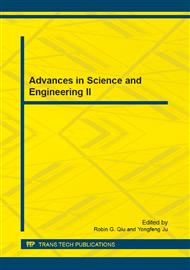p.826
p.834
p.840
p.847
p.852
p.856
p.862
p.867
p.873
Research on Vehicle Fuel Consumption Measuring System Based on Radio Frequency Communication Technology
Abstract:
At present, the energy crisis is increasingly serious. Energy-saving becomes a practical issues faced by all fields in the life. Considering this, the paper presents a new vehicle consumption measuring system based on intelligent handling and humane design under the promise of accurate measurement as well as low cost. In addition, the use of radio frequency communication technology makes precise measurement of instant and accumulative fuel consumption come true in any working hours. Field experiment results show that the vehicle fuel consumption measuring system has character of facilitate operation, low cost, advanced and reliable measurement method and high accuracy (within 1.5%). It can improve greatly the production efficiency of the internal combustion machine and avoid effectively the waste phenomenon, and be prone to make further application widely.
Info:
Periodical:
Pages:
852-855
Citation:
Online since:
October 2011
Authors:
Price:
Сopyright:
© 2012 Trans Tech Publications Ltd. All Rights Reserved
Share:
Citation:


